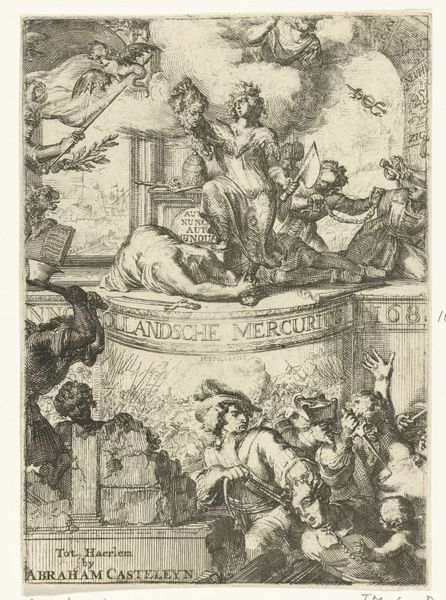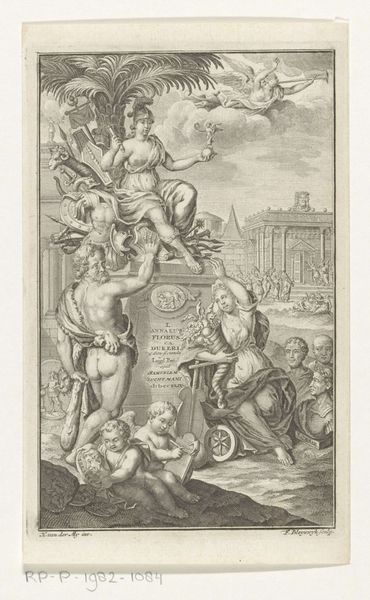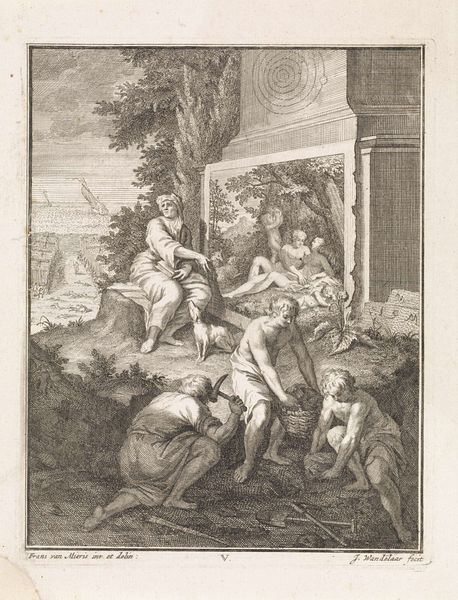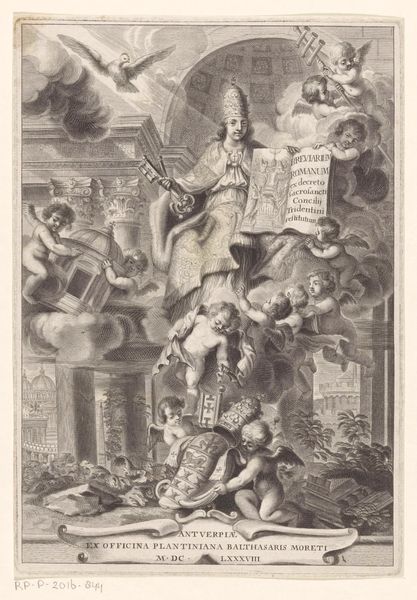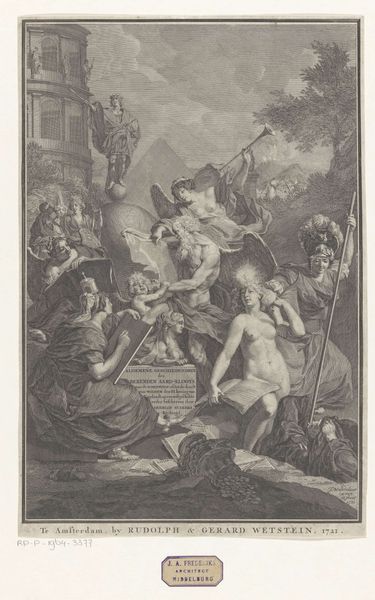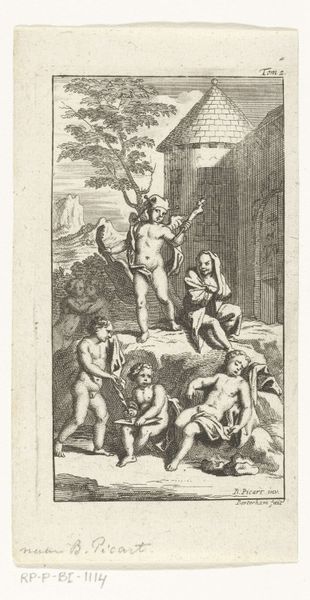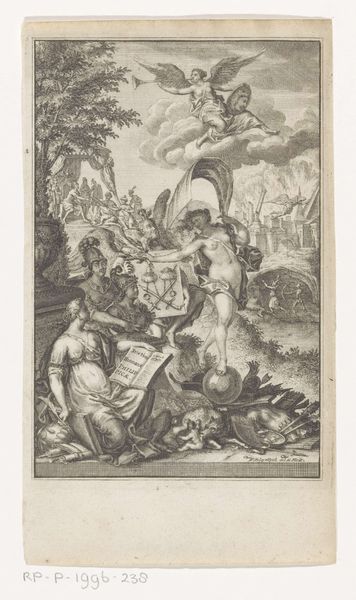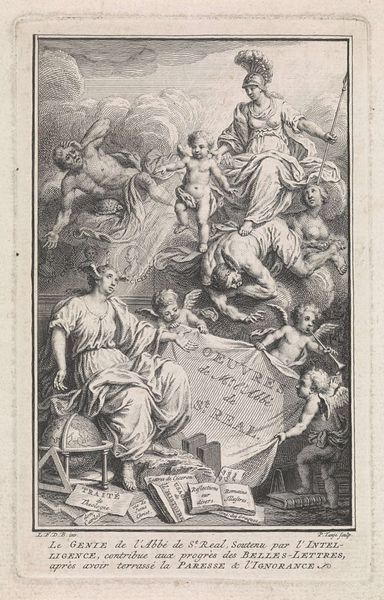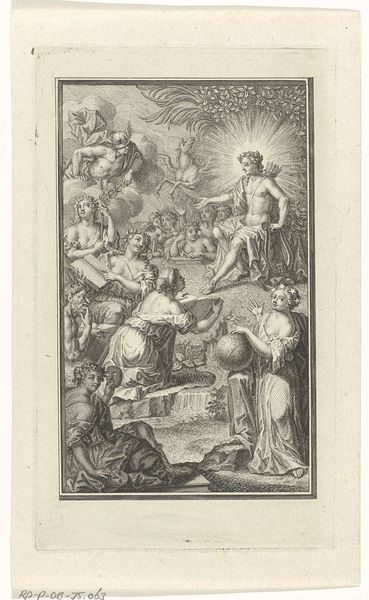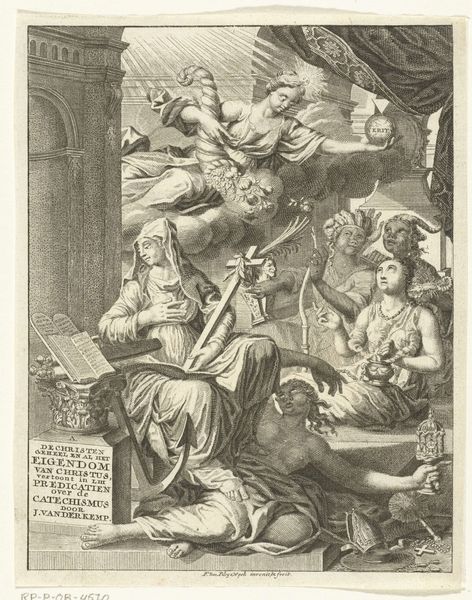
Dimensions: height 167 mm, width 120 mm
Copyright: Rijks Museum: Open Domain
Curator: This engraving from 1764 is titled "Allegorical Representation with Hermit, Sphinx, and Satyrs." It resides here at the Rijksmuseum, though the artist remains anonymous. Editor: It has such a frenetic, almost dizzying quality to it! There's so much happening within this single plane; it almost feels claustrophobic. What's your initial read on this dense composition? Curator: The density you note is quite typical of Baroque allegorical prints. Consider how the anonymous artist has woven together various figures. A contemplative hermit is seated on the left, seemingly transcribing text onto a tablet held by a semi-nude female figure, possibly an allegory for truth. Editor: It's hard not to fixate on that juxtaposition. A man cloaked in tradition quite literally "writing" onto the body of this suggestive muse. I read that as a metaphor for how established power structures often inscribe their narratives onto female bodies. Curator: A compelling reading. From a purely formal perspective, notice how the artist uses a swirling vortex of figures in the clouds to connect the terrestrial scene with celestial elements: an owl, and further down, satyrs flanking the globe representing the European continent. It guides the viewer’s eyes purposefully. Editor: But to what end? Who was the audience for such densely layered imagery? My hunch is, it’s aimed toward wealthy patrons, elites who are steeped in classical and biblical lore. They get off on unpacking these cryptic visuals while actively participating in an exclusionary system of power. Curator: Such patronage, of course, was endemic at the time, and shaped the entire art historical landscape. This very print, technically, demonstrates an astute grasp of Baroque visual rhetoric – the carefully orchestrated chaos, the symbolic deployment of classical figures. It's a tour-de-force of engraving technique. Editor: Perhaps it is a masterpiece of its time, but seeing it now, through our contemporary lens, underscores art's inherent complicity in upholding and propagating systems of inequality. We should examine the allegories with a critical eye. Curator: An examination that indeed, should never cease, as we look back to analyze visual construction. Editor: Yes, engaging with this artwork encourages questions about the dynamics of gender, class, and artistic intent—prompting necessary re-evaluations of power itself.
Comments
No comments
Be the first to comment and join the conversation on the ultimate creative platform.

